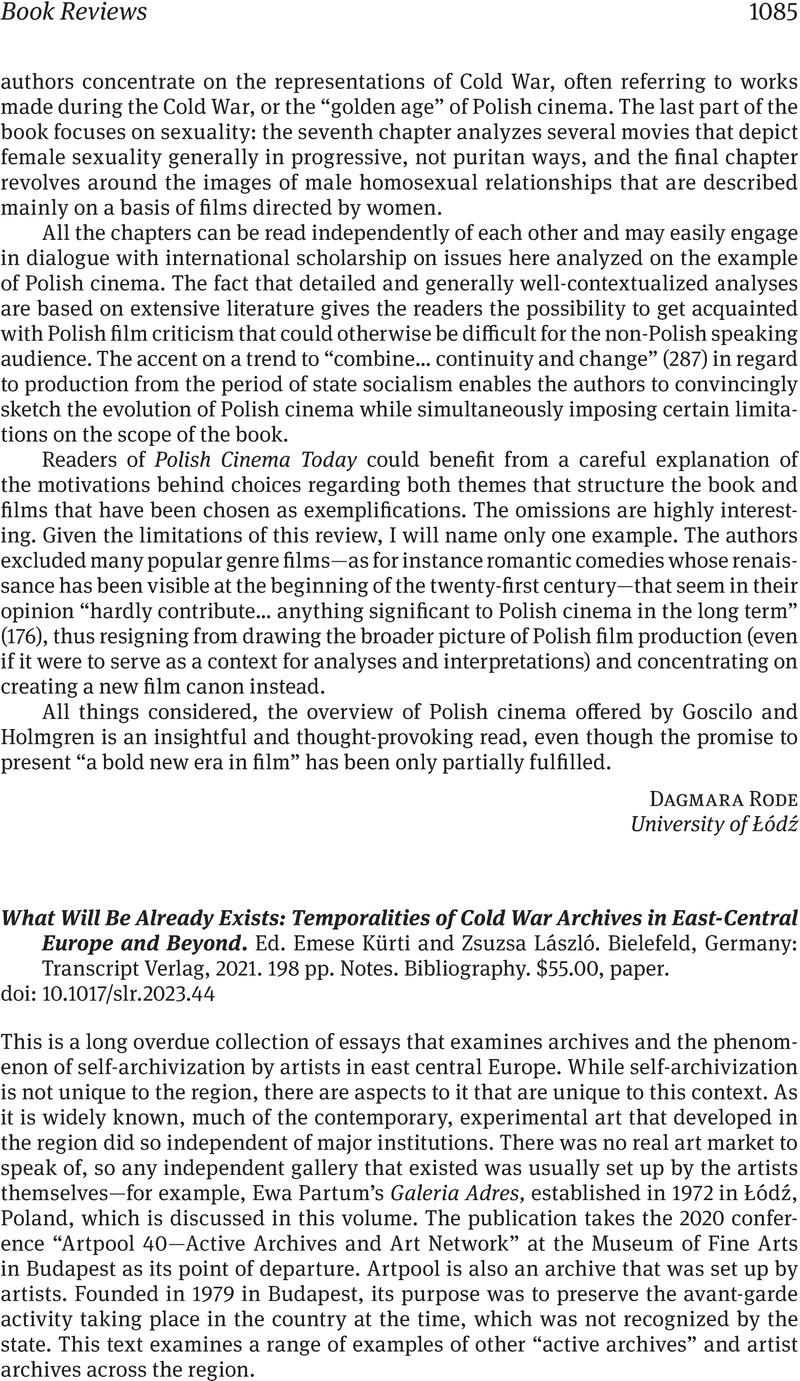No CrossRef data available.
Article contents
What Will Be Already Exists: Temporalities of Cold War Archives in East-Central Europe and Beyond. Ed. Emese Kürti and Zsuzsa László. Bielefeld, Germany: Transcript Verlag, 2021. 198 pp. Notes. Bibliography. $55.00, paper.
Review products
What Will Be Already Exists: Temporalities of Cold War Archives in East-Central Europe and Beyond. Ed. Emese Kürti and Zsuzsa László. Bielefeld, Germany: Transcript Verlag, 2021. 198 pp. Notes. Bibliography. $55.00, paper.
Published online by Cambridge University Press: 12 May 2023
Abstract
An abstract is not available for this content so a preview has been provided. Please use the Get access link above for information on how to access this content.

- Type
- Book Review
- Information
- Copyright
- Copyright © The Author(s), 2023. Published by Cambridge University Press on behalf of the Association for Slavic, East European, and Eurasian Studies


